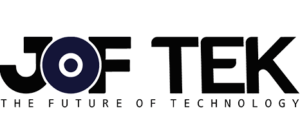Make Your Website More Effective
Welcome to our website building services, where we turn your online vision into a stunning reality! We specialize in crafting high-performance websites that not only captivate visitors but also drive tangible results for your business.
With our expertise in the latest web development technologies and design trends, we create websites that are not only visually appealing but also optimized for search engines, ensuring maximum visibility and organic traffic. Our team of skilled developers and designers work closely with you to understand your unique requirements and deliver a customized website that reflects your brand identity.
At JOFTEK, we understand that your website is more than just an online presence; it’s a powerful tool for growth and success. That’s why we go the extra mile to ensure that your website is fast, user-friendly, and optimized for conversions. From responsive layouts to intuitive navigation, we meticulously craft every aspect of your website to provide an exceptional user experience across all devices.
Whether you need a simple informational website or a robust e-commerce platform, we have the expertise to handle projects of any size and complexity. We stay up-to-date with the latest industry standards and best practices to ensure that your website is future-proof and ready to adapt to evolving technologies.
Partner with us and unlock the true potential of your online presence. Let’s build a website that not only impresses your visitors but also helps your business thrive in the digital landscape. Contact us today to discuss your project and take the first step towards a successful online presence.
Identifying content and feature priorities is a crucial step in any project, ensuring that resources are allocated effectively and the most impactful elements are given the necessary attention. Here’s a process we follow to help you identify content and feature priorities:

We use this process to identify content and feature priorities:
- Define Project Goals
- Conduct User Research
- Map User Journeys
- Prioritize Based on Impact and Effort
- Gather Stakeholder Input
- Create a Prioritization Framework
- Validate with User Testing
- Iterate and Refine
Online Brand Development
Your website plays a crucial role in online brand management, as it serves as the digital face of your brand and the primary platform for engaging with your audience. Here are some key considerations for leveraging your website for effective online brand management
Web Design Frequently Asked Questions
The cost of a website can vary significantly depending on several factors, such as the complexity of the project, the features and functionalities required, the size of the website, and the expertise of the web development team. Here are some factors that can influence the cost:
Basic Website: A simple, static website with a few pages and minimal customizations will generally have a lower cost compared to more complex websites.
Design and Customization: The level of design customization and visual elements, such as unique layouts, custom graphics, and animations, can increase the cost of the website.
Responsive Design: Building a responsive website that adapts to different screen sizes and devices requires additional effort, which can impact the overall cost.
Content Management System (CMS): Integrating a CMS, such as WordPress or Drupal, allows for easier content management and updates. CMS integration may have associated costs for setup and customization.
E-commerce Functionality: If your website requires e-commerce capabilities, including product listings, shopping carts, and payment gateways, the complexity and cost will generally be higher.
Third-Party Integrations: Integrating third-party services or APIs, such as social media platforms, payment gateways, or CRM systems, can increase the development time and overall cost.
Maintenance and Updates: Consider ongoing maintenance, updates, and support costs for your website to ensure it remains secure, up-to-date, and optimized over time.
It’s important to discuss with our experts, to get accurate cost estimates based on your specific requirements. They can provide detailed proposals and breakdowns of the costs involved. Remember that investing in a high-quality website is an investment in your brand’s online presence and can yield significant long-term benefits.
Once your website is ready, there are several important steps you should take to ensure its successful launch and ongoing management. Here’s what you can do:
Quality Assurance: Conduct a thorough quality assurance review to ensure that all aspects of your website are functioning as intended. Test all links, forms, interactive elements, and user flows to identify and fix any issues or bugs.
Content Review: Review all the content on your website to ensure it is accurate, well-written, and error-free. Pay attention to spelling, grammar, and formatting. Make any necessary edits or revisions before going live.
Search Engine Optimization (SEO): Implement SEO best practices to optimize your website for search engines. Make sure your metadata, headings, URLs, and content are optimized with relevant keywords. Set up tracking tools, such as Google Analytics, to monitor website performance.
Mobile Responsiveness: Verify that your website is mobile-friendly and responsive across different devices and screen sizes. Test its performance and usability on smartphones, tablets, and various web browsers.
Website Hosting and Domain: Choose a reliable hosting provider and configure your website to go live on your chosen domain. Make sure your domain is properly linked to your website and that all settings are correctly configured.
Launch Announcement: Prepare a launch announcement or blog post to announce the launch of your website. Share the news on your social media platforms, email newsletters, and other marketing channels to generate excitement and drive traffic to your website.
Website Promotion: Develop a marketing plan to promote your website and attract visitors. This may include strategies such as content marketing, social media promotion, paid advertising, influencer partnerships, or email marketing campaigns.
Ongoing Maintenance: Regularly monitor and maintain your website to ensure it remains secure and up-to-date. Update content, add new features, and address any technical issues that arise. Regularly back up your website to protect against data loss.
User Feedback and Analytics: Encourage users to provide feedback on your website’s usability and functionality. Use analytics tools to track website performance, user behavior, and conversion metrics. Analyze the data to make data-driven decisions for continuous improvement.
Regular Content Updates: Keep your website fresh and engaging by regularly updating content, publishing blog posts or articles, and adding new features or sections. This will attract returning visitors and improve search engine rankings.
Remember that a website is an ongoing project that requires continuous attention and improvement. Regularly evaluate its performance, analyze user feedback, and adapt your strategies to ensure your website remains effective in achieving your goals.
The time it takes to build a website can vary significantly based on several factors, including the complexity of the project, the size of the website, the features and functionalities required, the design intricacy, the availability of content, and the expertise of the development team. Here are some general guidelines:
Simple Brochure Website: A basic brochure-style website with a few pages and minimal customizations can typically be completed in a few weeks to a couple of months.
Small Business Website: A small business website with a moderate number of pages, custom design, and basic functionality, such as contact forms and image galleries, usually takes a few months to develop.
E-commerce Website: Building an e-commerce website with product listings, shopping cart functionality, payment gateways, and inventory management can take several weeks to a few months, depending on the complexity and the number of products.
Custom Web Application: Developing a complex web application with advanced features, user accounts, database integration, API integrations, and custom functionality can take several months to a year, depending on the complexity and scale of the project.
It’s important to note that these timelines are estimates, and actual development time may vary based on project-specific requirements, collaboration with stakeholders, availability of resources, and any unforeseen challenges that may arise during the development process.
To ensure a smooth and timely website development process, it’s essential to clearly define project requirements, provide timely feedback to the development team, and collaborate effectively with designers, developers, and content creators throughout the project duration.
Yes, depending on the website development approach and the content management system (CMS) used, you can often maintain and update the website yourself without extensive technical knowledge. Here are a few factors to consider:
Content Management System (CMS): Choose a CMS that offers user-friendly interfaces and intuitive editing tools. Popular CMS platforms like Shopify, WordPress, Drupal, or Joomla have user-friendly admin panels that allow you to easily add, edit, and manage website content, including text, images, and multimedia elements.
Training and Support: If you’re not familiar with the CMS, consider attending training sessions or tutorials provided by the CMS community or your web development team. They can guide you on how to navigate the CMS, make content updates, and address common maintenance tasks. Additionally, ensure you have access to support resources, such as documentation, forums, or a help desk, in case you encounter any difficulties.
Content Updates: Regularly update your website with fresh content, such as blog posts, news articles, or product updates. This helps keep your website relevant and engaging for visitors. With a user-friendly CMS, you should be able to create and publish new content easily without the need for extensive technical knowledge.
Security Updates: Website security is crucial. Stay up to date with the latest security patches and updates provided by the CMS platform and any plugins or themes you’re using. Regularly check for updates and apply them promptly to ensure your website remains secure.
Backups and Maintenance: Regularly back up your website’s files and database to safeguard against potential data loss. Additionally, perform routine maintenance tasks such as checking for broken links, optimizing website performance, and monitoring website analytics to identify areas for improvement.
Developer Assistance: While you can handle most day-to-day maintenance tasks yourself, there may be occasions when you require assistance from web developers or designers. This could be for more complex updates, design changes, or troubleshooting technical issues. Ensure you have access to reliable developers who can provide support when needed.
It’s important to note that the level of maintenance and updates you can handle may depend on your comfort level with technology and the complexity of the website. If you anticipate needing more advanced functionality or ongoing support, you can also consider partnering with JOFTEK for periodic assistance.
By choosing a user-friendly CMS, receiving adequate training, and having access to support resources, you should be able to maintain and update your website yourself for routine content management tasks.

